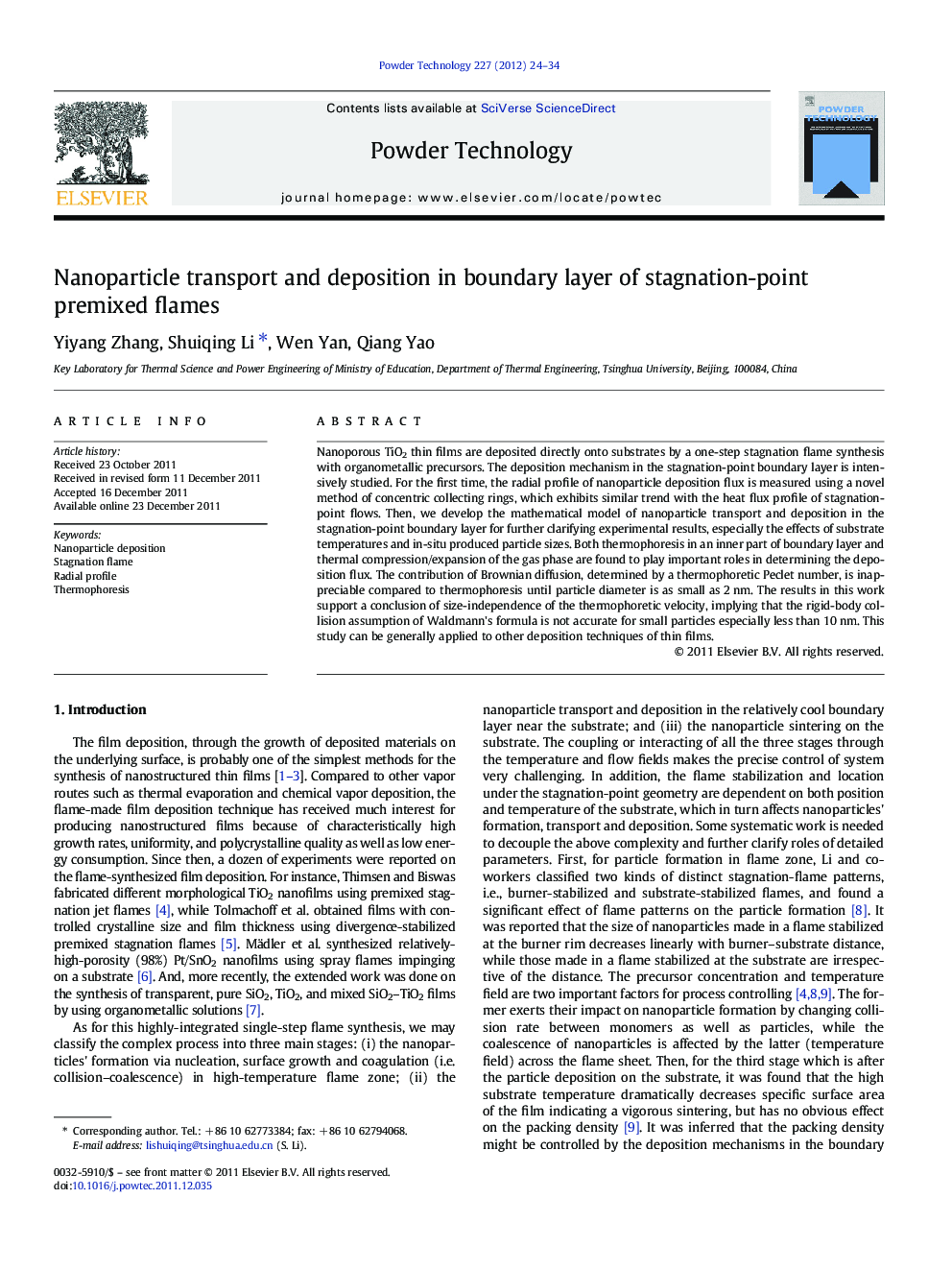| Article ID | Journal | Published Year | Pages | File Type |
|---|---|---|---|---|
| 237047 | Powder Technology | 2012 | 11 Pages |
Nanoporous TiO2 thin films are deposited directly onto substrates by a one-step stagnation flame synthesis with organometallic precursors. The deposition mechanism in the stagnation-point boundary layer is intensively studied. For the first time, the radial profile of nanoparticle deposition flux is measured using a novel method of concentric collecting rings, which exhibits similar trend with the heat flux profile of stagnation-point flows. Then, we develop the mathematical model of nanoparticle transport and deposition in the stagnation-point boundary layer for further clarifying experimental results, especially the effects of substrate temperatures and in-situ produced particle sizes. Both thermophoresis in an inner part of boundary layer and thermal compression/expansion of the gas phase are found to play important roles in determining the deposition flux. The contribution of Brownian diffusion, determined by a thermophoretic Peclet number, is inappreciable compared to thermophoresis until particle diameter is as small as 2 nm. The results in this work support a conclusion of size-independence of the thermophoretic velocity, implying that the rigid-body collision assumption of Waldmann's formula is not accurate for small particles especially less than 10 nm. This study can be generally applied to other deposition techniques of thin films.
Graphical abstractFigure optionsDownload full-size imageDownload as PowerPoint slide
